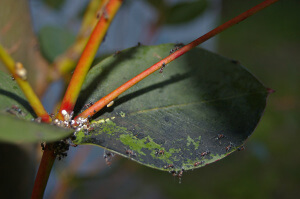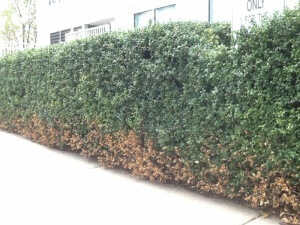My Shrubs Are Turning Black/Brown : Learn What’s Causing The Problem And How To Fix It!

My Shrubs Are Turning Black:
In 90% of cases of shrubs turning black, the cause is a fungus commonly known as Sooty Mold. Sooty Mold is a fungus that grows on the excretions of a plant-sucking insect.
In small amounts, Sooty mold is typically not harmful, but in large amounts, it can coat leaves of your shrubs to the point where they cannot absorb sunlight. This means that the process of photosynthesis is interrupted and they will not be able to produce the nutrients they need for survival.
To treat sooty mold you need to suppress the plant-sucking insect population. Once the insect population is in check the sooty mold will begin to disappear.
My Shrubs Are Turning Brown:
Unlike black shrubs, shrubs that are turning or have turned brown can be caused by a number of issues. The three main issues that would result in browning shrubs are drought stress, winter damage, and disease.
Drought Stress:
With drought stress, the leaves wilt, begin yellowing, and turn brown from the outside moving inward. You can combat drought stress by thoroughly watering trees and mulching around the base of the tree to retain moisture. To find out how much water your tree needs to thrive check out our watering article.

Winter Damage:
Most of these negative effects of winter stem from the fact that trees and shrubs lose moisture through their pores which are located on their leaves/needles. During the winter months, the dry air and wind accelerate this effect leading to leaves increasing their water demand from the roots in order to survive. However, the root system usually has a hard time keeping up with the leaves’ demands. The result: leaves and needles turning brown and dying. This cycle is called winter burn.
Because our last frost was late this year and trees/shrubs had started pushing out new growth, winter burn is prevalent around the DC metro area.
Disease:
Brown spots and the browning of leaf veins while the rest of the leaf is still green are tell-tale signs of shrub disease. If your shrub is suffering from an overall browning and you have ruled out winter damage or drought stress, it may have a root disease. Common diseases in this area include anthracnose, leaf spot, Armillaria root rot, and Phytophthora root rot. To correctly identify the type of disease your shrub is suffering from a Certified Arborist will need to inspect your shrub and its leaves.
